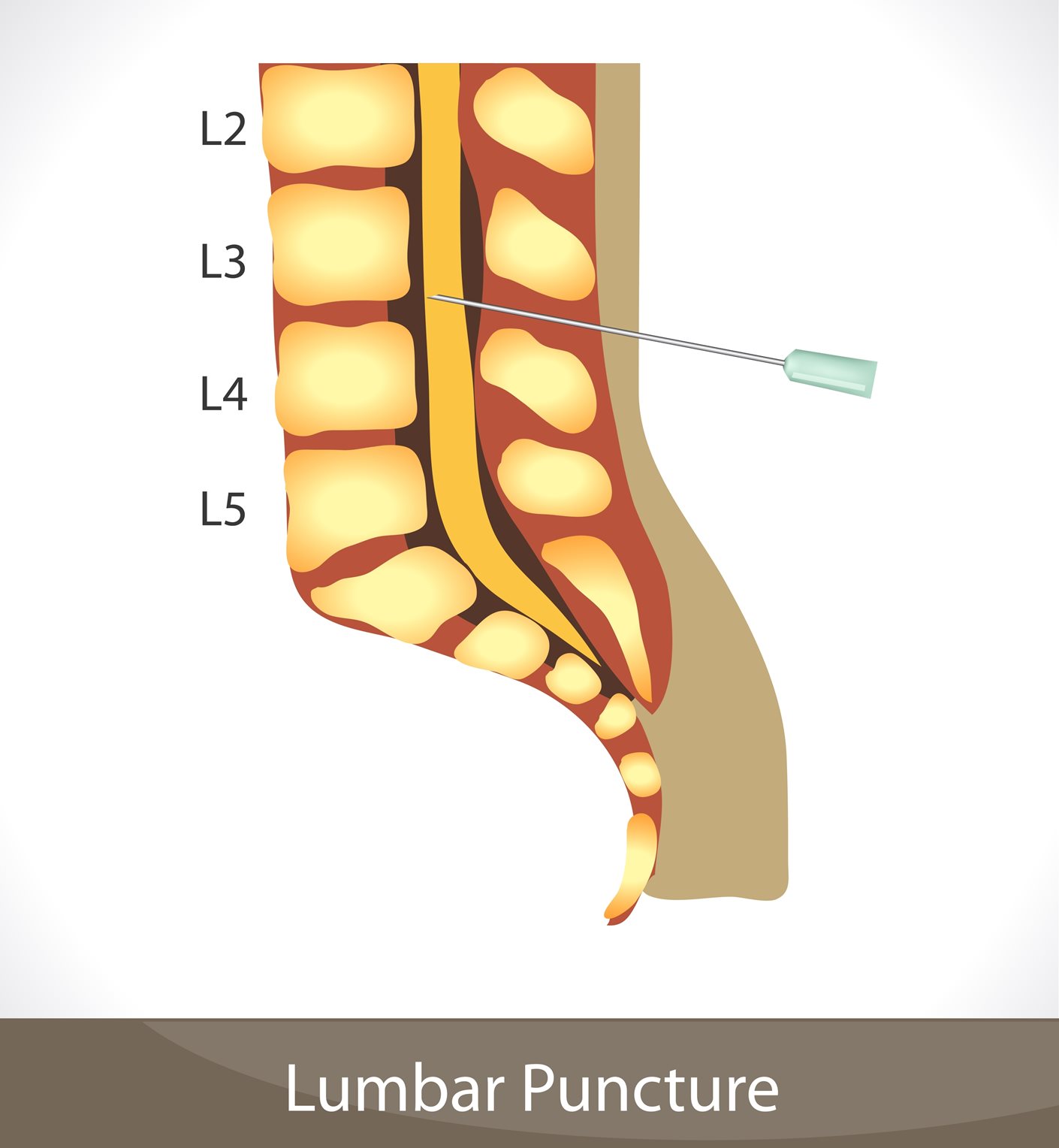When somebody is admitted to hospital feeling unwell, and a doctor suspects that it might be meningitis, a lumbar puncture may be performed. Hearing from a doctor that you, or a loved one, will need a lumbar puncture can be a daunting prospect. Especially when you are dealing with a serious illness in an already unfamiliar hospital setting.
What is a lumbar puncture?
A lumbar puncture is the process of inserting a thin, hollow needle between the bones of the lower back and taking some fluid called CSF (cerebrospinal fluid) which surrounds the brain and spinal cord. You may have also heard this process referred to as a ‘spinal tap’.
Testing this fluid can help doctors confirm whether the patient has meningitis and what bug is causing it. National guidelines recommend that a lumbar puncture is done alongside other routine testing, such as blood tests.
Lumbar puncture is not normally used as a test for someone admitted to hospital with suspected sepsis/septicaemia; in this case, a blood test will be the key test.
Why is a lumbar puncture needed?
Currently, a lumbar puncture is the only definitive way to diagnose meningitis and what is causing it. This helps guide treatment and a confirmed diagnosis can help patients left with after-effects access the help they need.
The quicker a lumbar puncture is performed when meningitis is suspected, the more likely it is that a cause will be found. However in some instances, doctors will not perform a lumbar puncture or will delay it because it would be too risky (for example when someone is severely ill and having seizures).
Although it may sound scary, it is important to remember that a lumbar puncture is a routine procedure, and the medical teams will have experience of carrying these out. Depending on the urgency of the procedure, a doctor will talk to you and your family to discuss what will happen. Use this time to ask any questions you may have. If the medical team mention a possibility of meningitis but a lumbar puncture has not been performed, we encourage you to mention it to the team.

Does a lumbar puncture hurt?
A lumbar puncture can be an uncomfortable procedure for some. It is important to stay still, and the patient will be asked to lie on their side and pull their knees up to their chin, as in the foetal position. Sometimes the lumbar puncture will be performed with the patient sitting and leaning forward but lying on the side is the preferred position. Adopting this position helps to open the area between the small bones in spine.
If the patient is a child, a dedicated nurse will help them to stay in position, and older children may be given some medication to help them relax before the procedure. The medical team will understand that it is especially important for a child to feel relaxed and settled, and for the family to feel informed.
Before performing the procedure, the area around the back will be cleaned and made sterile, and a local anaesthetic will be given around the site – this can be slightly painful or sting. The doctor will then carry out the procedure where the patient may feel some pushing and prodding but it shouldn’t be painful.
The lower back may ache following a lumbar puncture, but this should settle over time. If a nerve is touched, there may be an aching pain usually in the leg – but again this will settle over time. In older children and adults the most common after effect is a headache (or sometimes vomiting), due to the reduction in pressure around the brain from the loss of CSF. The body will replenish the small amount of CSF very quickly, but in the meantime symptoms can be treated with painkillers. Sometimes caffeinated drinks such as tea, coffee or coca cola may help the headache.
What happens after a lumbar puncture?
The CSF collected will be sent to the laboratory and tested to help confirm or rule out a diagnosis of meningitis.
It is rare for complications to occur following a lumbar puncture, and it is a safe procedure to have done. If you have any questions or concerns about lumbar punctures for either yourself or a loved one, please contact our support team who will be there to listen and help you moving forward.
We have produced a more detailed factsheet specifically for parents of young babies who might need to undergo a lumbar puncture, which is available here.